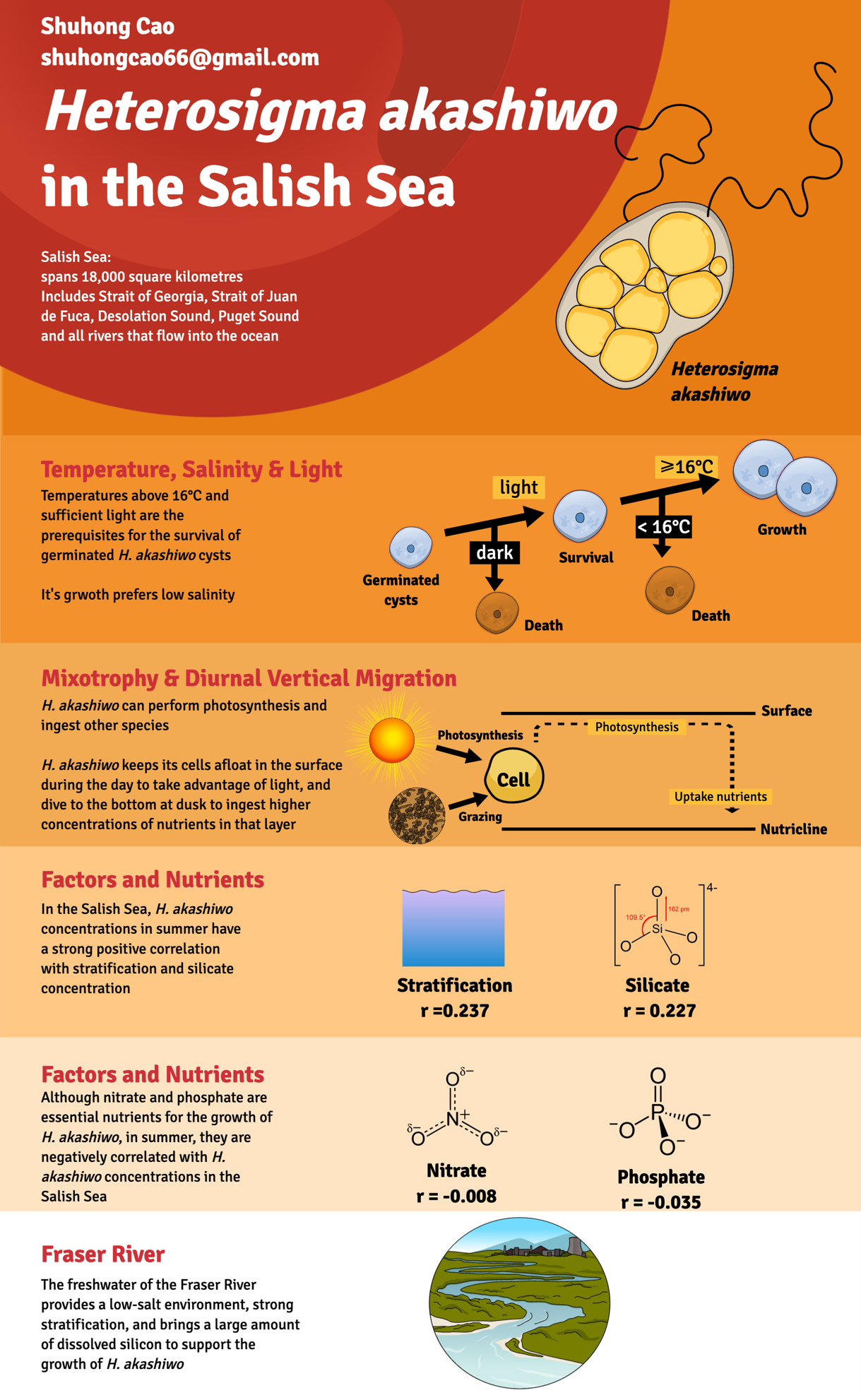Effects of Heterosigma akashiwo blooms by Eutrophication in the Salish Sea
Shuhong Cao, MLWS 2022
Although algal blooms are one of the most common manifestations of marine pollution, little is known about the species that cause some algal blooms and their impact on ecological health. Broader exposure to harmful algae has emerged in coastal environments and food chains around the world, with increasing occurrences and resulting in the death of large numbers of marine life. This exposure is bound to continue as human-induced emissions of coastal pollutants increase. The impact of algal blooms on marine ecology during its occurrence has sounded an alarm to the world: algal blooms threaten aquatic ecological health on a global scale. The world's growing trends in marine pollutant production, emissions, and disposal must shrink and even stop for dealing with these threats.
In terms of the impact of algal blooms on coastal ecological health, most of the research so far has been limited to some specific stages of the red tide phenomena. It is often limited to a single species and its reproduction, growth and exposure path. This practice obscures the fact that at each stage of the occurrence of algal blooms, there are distinct and complex interactions that affect marine ecological health: the activities and health of marine life, the functioning of the food chain, the quality of water bodies, and even air quality and terrestrial life in the region.
This study details the effects of the reproductive and life cycle of a specific species responsible for harmful algal blooms in the waters of the Salish Sea, and on the levels of various substances in the water. It reveals numerous exposure pathways that affect the health of marine life in the region. This study briefly describes the effects of ingestion, inhalation, and exposure to aquatic organisms, as well as toxic chemicals associated with these algae, such as reactive oxygen species (ROS), which can cause respiratory failure. This study further shows that human activities and pollutant discharges may exacerbate the exposure and risk to these waters by the harmful algal bloom. Despite some gaps in the data, the evidence gathered in this study is sufficient to conclude that measures are urgently needed to reduce human exposure to the waters and make them ecologically free from the red tide pollution.
